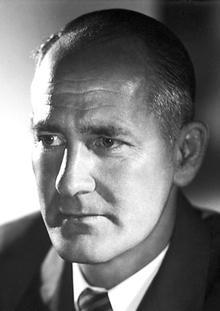George Beadle (George Wells Beadle)

In 1931 George Beadle was awarded a National Research Council Fellowship at the California Institute of Technology at Pasadena, where he remained from 1931 until 1936. During this period he continued his work on Indian corn and began, in collaboration with Professors Theodosius Dobzhansky, S. Emerson, and Alfred Sturtevant, work on crossing-over in the fruit fly, Drosophila melanogaster. In 1935 Beadle visited Paris for six months to work with Professor Boris Ephrussi at the Institut de Biologie physico-chimique. Together they began the study of the development of eye pigment in Drosophila which later led to the work on the biochemistry of the genetics of the fungus Neurospora for which Beadle and Edward Lawrie Tatum were together awarded the 1958 Nobel Prize for Physiology or Medicine. In 1936 Beadle left the California Institute of Technology to become Assistant Professor of Genetics at Harvard University. A year later he was appointed Professor of Biology (Genetics) at Stanford University and there he remained for nine years, working for most of this period in collaboration with Tatum. In 1946 he returned to the California Institute of Technology as Professor of Biology and Chairman of the Division of Biology. Here he remained until January 1961 when he was elected Chancellor of the University of Chicago and, in the autumn of the same year, President of this University.
After retiring, George Beadle undertook a remarkable experiment in maize genetics. In several laboratories he grew a series of Teosinte/Maize crosses. Then he crossed these progeny with each other. He looked for the rate of appearance of parent phenotypes among this second generation. The vast majority of these plants were intermediate between maize and Teosinte in their features, but about 1 in 500 of the plants were identical to either the parent maize or the parent teosinte. Using the mathematics of Mendelian genetics, he calculated that this showed a difference between maize and teosinte of about 5 or 6 genetic loci. This demonstration was so compelling that most scientists now agree that Teosinte is the wild progenitor of maize. During his career, George Beadle has received many honors. These include the Honorary Doctor of Science of the following Universities: Yale (1947), Nebraska (1949), Northwestern University (1952), Rutgers University (1954), Kenyon College (1955), Wesleyan University (1956), the University of Birmingham and the University of Oxford, England (1959), Pomona College (1961), and Lake Forest College (1962). In 1962 he was also given the honorary degree of LL.D. by the University of California, Los Angeles. He was elected a Fellow of the American Academy of Arts and Sciences in 1946. He also received the Lasker Award of the American Public Health Association (1950), the Dyer Award (1951), the Emil Christian Hansen Prize of Denmark (1953), the Albert Einstein Commemorative Award in Science (1958), the Nobel Prize in Physiology or Medicine 1958 with Edward Tatum and Joshua Lederberg, the National Award of the American Cancer Society (1959), and the Kimber Genetics Award of the National Academy of Sciences (1960).
Born
- January, 01, 1970
- USA
- Wahoo, Nebraska
Died
- June, 09, 1989
- USA
- Chicago, Illinois
Cemetery
- Rockefeller Chapel
- Chicago, Illinois
- USA


